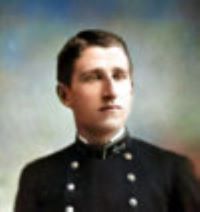Welcome to the George Breed Historical Society
Together We Can Rewrite History
Hidden History
George Breed's electrified guitar, patented in 1890, was a groundbreaking invention that had the potential to revolutionize the way music was played. However, the guitar was never successful due to its weight, which was almost 20 pounds, and the fact that it required musicians to change the way they played. Unlike modern electric guitars, which use an amplifier to enhance the sound, Breed's guitar used electricity flowing through the strings to produce a distinctive, innovative sound. Despite its potential, the guitar's limitations ultimately prevented it from becoming widely adopted.
In this video, renowned historian Dr. Mathew Hill delves into the fascinating history of the electric guitar. As the leading researcher in early guitar history, Dr. Hill has extensively studied the contributions of George Breed and the evolution of the electric guitar. In this presentation, he serves as an objective scholar and expert, presenting the historical facts without advocating for or supporting any particular perspective or initiative. Breed's discussion starts at the 10 minutes 45 second mark.
Story
 George Breed was born on July 19, 1864 in Pittsburgh, Pennsylvania into a hardworking, creative family. His grandfather, George Breed, was one of the founders of Western Pennsylvania Hospital and had a successful glass and china importing business in Pittsburgh. Breed's uncle, Richard, was also an inventor and held multiple patents. Before receiving his own patent in 1890, Breed served in the US Navy. He entered the United States Naval Academy in Annapolis, Maryland as a Cadet Midshipman on June 17, 1882 and graduated on June 10, 1886.
George Breed was born on July 19, 1864 in Pittsburgh, Pennsylvania into a hardworking, creative family. His grandfather, George Breed, was one of the founders of Western Pennsylvania Hospital and had a successful glass and china importing business in Pittsburgh. Breed's uncle, Richard, was also an inventor and held multiple patents. Before receiving his own patent in 1890, Breed served in the US Navy. He entered the United States Naval Academy in Annapolis, Maryland as a Cadet Midshipman on June 17, 1882 and graduated on June 10, 1886.
George Breed is also known for his invention of kite-based aerial photography. He created a system in which a large box kite was flown and a smaller kite with a trolley attached to its string was sent up to meet it. The second kite would then collapse and trigger the shutter of a camera, allowing for aerial photographs to be taken.
Before his initial US patent was released, George Breed resigned from the US Navy. Despite his efforts to commercialize his invention, Breed struggled to make it a success and eventually returned to the Navy. He later resigned again after receiving his second US Patent for "Apparatus for Producing Musical Sounds by Electricity." Breed passed away in 1936, but his legacy has been carried on by his family to this day.
Now, Electrified Reality Studios is creating a fictional story about George Breed. For details, please visit their website and this Substack blog
US Patent
George Breed's 1890 US Patent described a guitar that was not like modern electric guitars, which amplify the sound of the strings using pickups and an amplifier. Instead, Breed's guitar used electricity to directly vibrate the strings of an acoustic instrument, allowing it to be played without strumming or plucking. By pressing the strings onto frets, the player could complete an electrical circuit that caused the strings to vibrate continuously. This allowed the guitar to be played with one hand. The guitar used the Laplace (Lorentz) force, which occurs when a wire carrying an electrical current is placed in a magnetic field, to vibrate the strings.
To create a strong enough Laplace force to vibrate the strings, Breed used an electromagnet, as the permanent magnets of the time were not powerful enough. However, this made the guitar quite heavy and caused it to fall forward when played. Despite the use of a rotating slip ring to modulate the current to the strings and create sound, the guitar produced an underwhelming sound quality and did not gain popularity.


